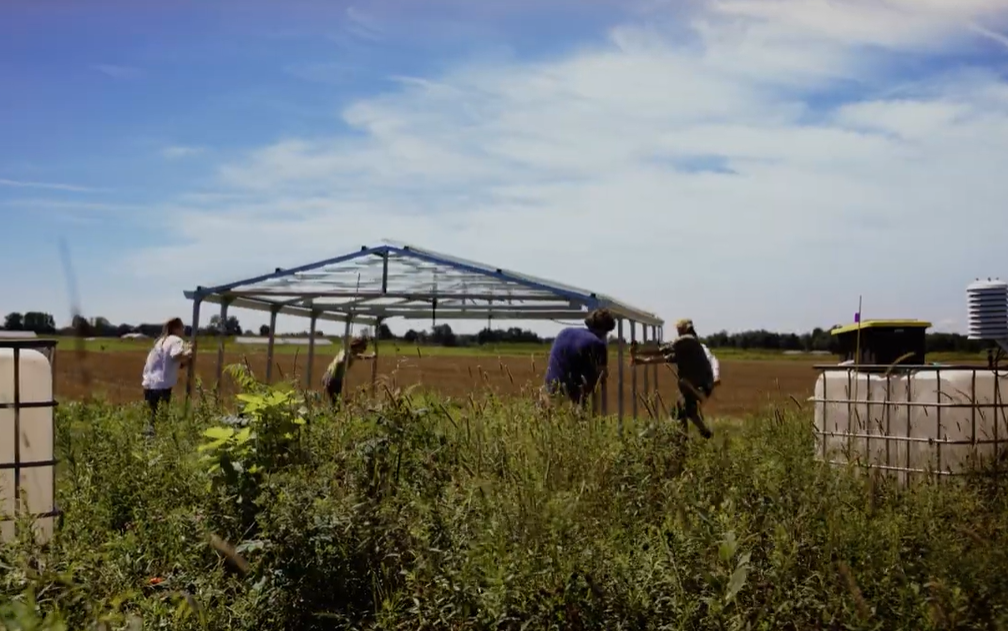By Sasha Kravchenko
A team of Michigan State University researchers has received a $750,000 grant from the U.S. Department of Agriculture’s National Institute of Food and Agriculture to evaluate soil health changes from intensive rainfall and/or drought.
The project is led by Alexandra Kravchenko, professor in the Department of Plant, Soil and Microbial Sciences. Her research primarily delves into understanding the processes that drive soil carbon sequestration and greenhouse gas emission.
The team includes:
- Sarah Evans, associate professor and microbial ecologist in the Department of Integrative Biology and the K. Kellogg Biological Station.
- Andrey Guber, professor in the Department of Plant, Soil and Microbial Sciences, who specializes in soil physics, hydrology and modeling transport of microbes in soil.
- James Moran, an associate professor in the departments of Integrative Biology, and Plant, Soil and Microbial Sciences, who studies nutrient exchange in soil.
The group will explore the effects summer weather patterns of extreme droughts and intensive rainfalls have on soils in Midwest corn, soybean and wheat production systems. Kravchenko said that while these shifts in extreme weather are often discussed in future terms, they are already occurring.
According to the National Weather Service, many areas of Michigan experienced one of the driest months of May on record. Lansing had the fifth driest, while Grand Rapids saw its second driest. The lack of precipitation stunted the progress of many crops across the state.
“There is a lot of research on climate change and agriculture, but there are few reliable quantitative assessments of the implications of drought or excess moisture on soil health,” Kravchenko said. “This is due in part to the significant expense of field-scale precipitation simulations, as well as the variety of management practices used by farmers. To generate a more comprehensive understanding of the issue, we’re looking at the problem under different management techniques and rainfall scenarios.”
Researchers are focusing on the two primary determinants of soil health: structure and organic matter. Soil structure refers to the arrangement of soil particles and is the driver of how easily water and air can move therein. Soil organic matter is all of the living and dead material within soil that is decomposed by microbes, helping to stabilize soil structure, fertilize the soil, and feed soil organisms.

A four-year experiment will be initiated at the W.K. Kellogg Biological Station in Hickory Corners, Michigan. The site is home to a Long-Term Ecological Research (LTER) program, which is part of a nationwide network established by the National Science Foundation to better understand the ecology of U.S. cropping systems.
The team will use rainout shelters from an established LTER project that began in 2021 to create controlled precipitation conditions.
Researchers are investigating conventional tillage and no-till management — the two tillage practices most common in the Midwest — and comparing them with “old field” land, areas that were previously farmed but have been left to grow herbaceous annual vegetation. The team will document changes in soil using a number of soil health indicators.
Soil samples will be collected and processed in the laboratory, with the focus on characteristics such as total carbon and nitrogen, bulk density, microbial biomass, enzyme activity and aggregate stability, among others. The team will also use high-resolution imaging technologies to examine samples, providing a detailed look at soil structure at a spatial scale of just a few microns.
Statistical analysis and modeling will then be used to generate a predictive model on the potential effects of excessive rainfall and drought. While the project is concentrating exclusively on the Midwest, the methodology is replicable elsewhere.
“Healthy soils are essential to agriculture, not only in the Midwest but worldwide,” Kravchenko said. “Ultimately, we want to equip farmers with the knowledge and ability to implement cost-effective strategies for their operations long into the future. That relies in part on being prepared for changes in rainfall patterns, so we believe this work is critical to long-term agricultural sustainability.”
Source : msu.edu